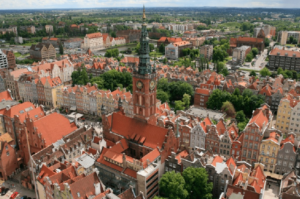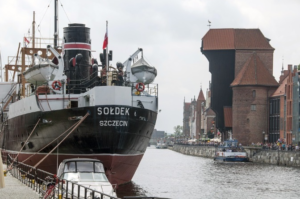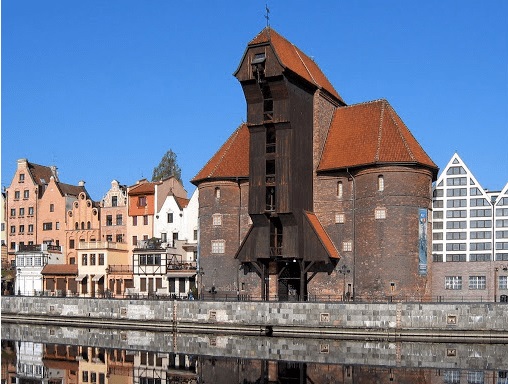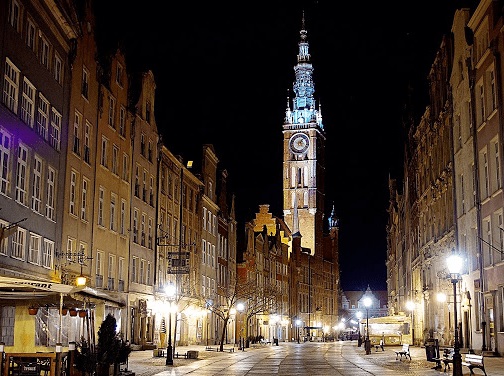Gdańsk

The city of freedom
A piece of history
The oldest mentions of Gdańsk date back to 997 and were related to the mission of St. Adalbert in Pomerania. The end of the Thirteen Years’ War and the return of the city to Poland initiated the so-called Golden Age – an age during which a multitude of beautiful buildings were built. Currently, it is a provincial city, full of monuments and a rich history, including the contemporary one, after 1945.
Tourist attractions





The Gdańsk Gate

[1] Golden Gate
Walking through the streets of Gdańsk, one should not miss the view of the beautifully decorated Golden Gate or Upland Gate. Upland Gate is a Renaissance building in the shape of a triumphal arch. In a similar era, the Golden Gate, captivating with its finesse of decorations was created.

[2] Upland Gate
Maritime Museum

“Sołdek” is the first seagoing, steam-powered ship built in Poland after the terrible Second World War. Walking on the deck, you can feel the spirit of shipbuilding technology of the previous century.

The museum have an impressive collection of boats from all over the world. The journey begins with the first bales on the water, through sailing ships, galleons and ending with modern ships, the tour path as if telling the story of shipbuilding.

The Medieval Crane, a hybrid of a gate, tower and port crane, shows the trade of the Middle Ages. It is worth stopping on the next floors to see many interesting exhibits.
St. Mary's Basilica
One of the largest Gothic temples in Europe, overwhelming in its vastness. Built for 159 years. Seven gates lead to the temple, inside 27 pillars support a vault stretching 30 m above the floor. Inside there is an oak late Gothic altar. 402 steps lead to the top of the 82-meter tower.

Long street

The representative street of Gdańsk is surrounded by magnificent Renaissance tenement houses, which to this day evoke reflections on the power of Gdańsk and the taste of its former rulers. Being on Long Street, it is certainly worth visiting the Artus Court and the Uphagen House.
European Solidarity Centre

When visiting Gdańsk, one should not miss the museum that tells the story of contemporary history. The aim of the Centre is to “promote the heritage of “Solidarity” in Poland and other countries and actively participate in building a European identity”. A permanent exhibition has been prepared for the new building, which presents the contemporary history of Poland, the emergence of the Solidarity movement and its legacy in six rooms.
World War Two Museum
Poland felt the Second World War very painfully. The World War II Museum presents the great wounds that the war left on Poland. Many exhibits present the tragic fates of innocent people who were victims of the totalitarian systems that emerged. Terror – a word that is not foreign to people of war. The museum is worth visiting if only to reflect on how the system can destroy everything in the name of the ideology of the “great leaders of the nation”

Historic water forge

In the Valley of Joy, surrounded by forests, stands an old wooden water forge, whose devices are powered by the water of the Oliwa Stream. The impressive hammer makes an impression.
Thirsty for more knowledge? Visit the tourist information website
Adress
Długi Targ 28/29 80-830 Gdańsk
Telephone
058 301 43 55
it@visitgdansk.com
The website was created for educational purposes only and may not be used for commercial purposes in part or in whole.
Bibliography:
[1] , [2] pl.wikipedia.org
[3] mygdansk.com.pl
[4] archinea.pl
[5] pl.wikipedia.org
[6] nmm.pl
[7] nowemuzeum.pl
[8] mygdansk.com.pl